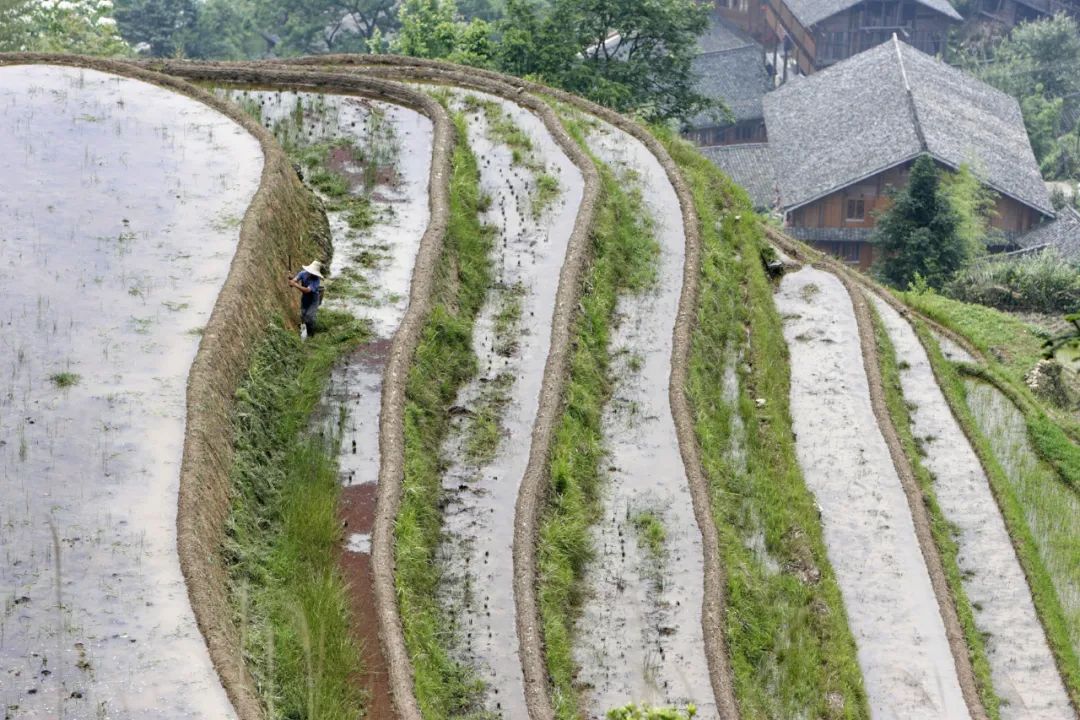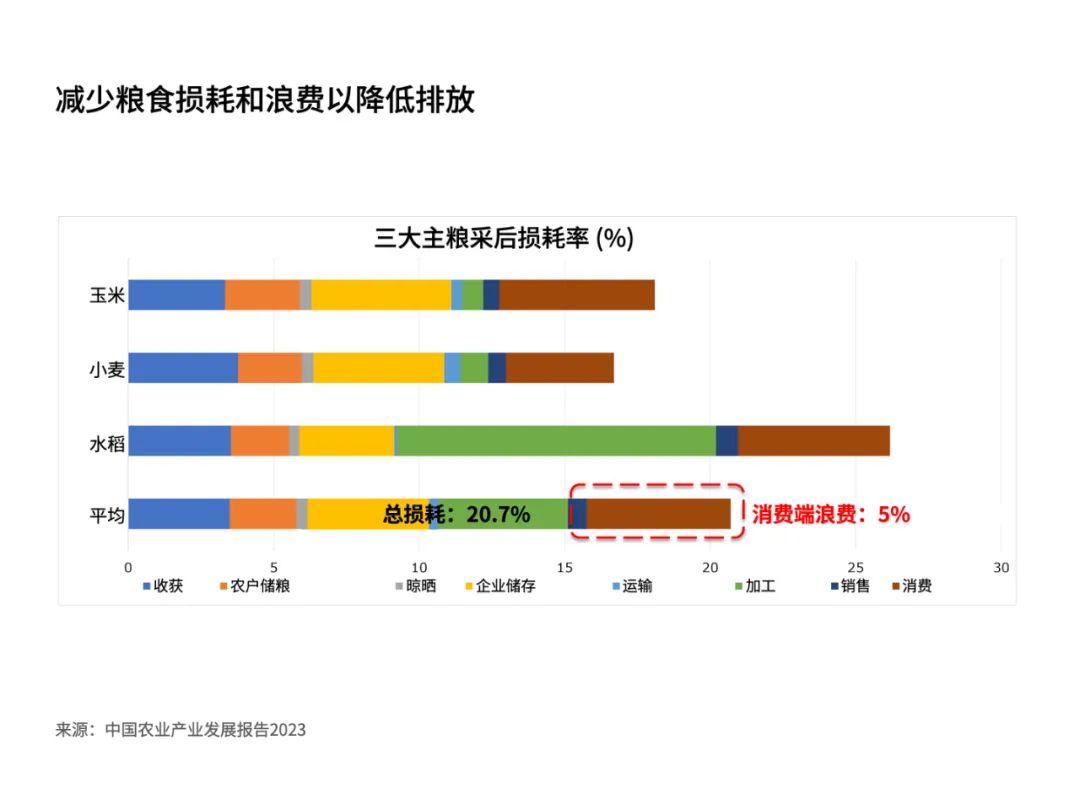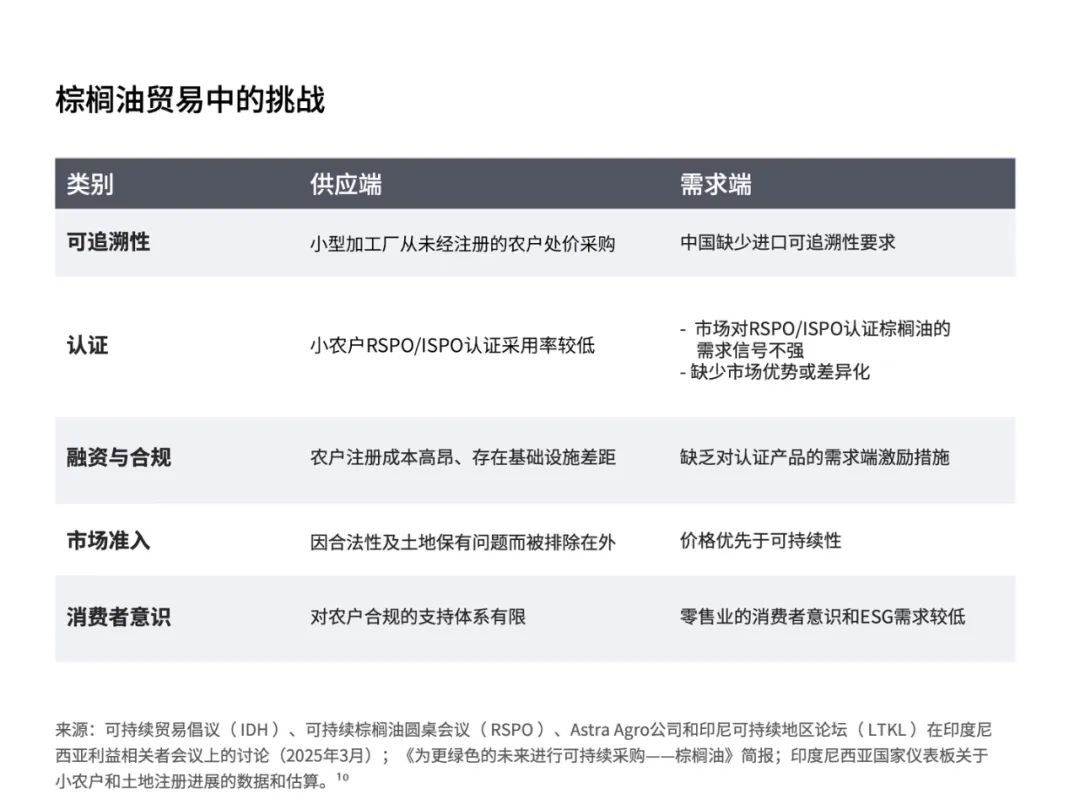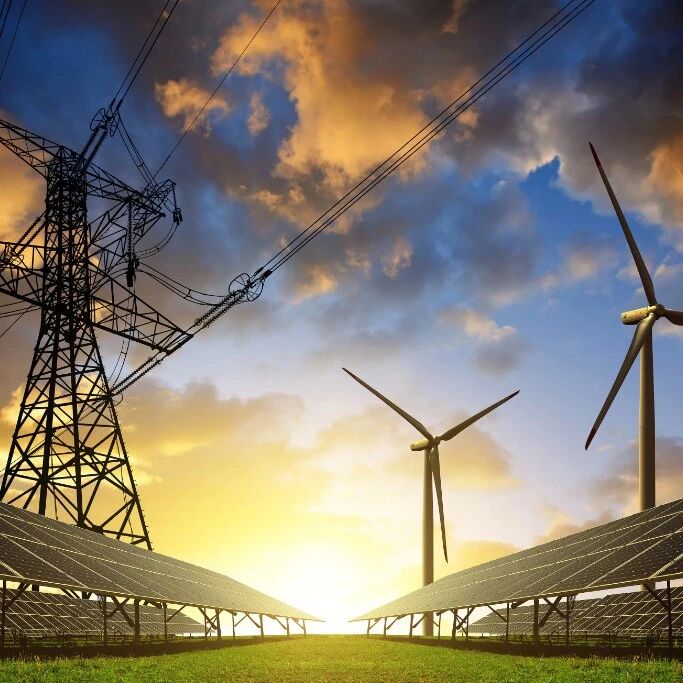

,
:/Nir Elias
Felipe Carazo
Global Head of Sustainable Commodities, Tropical Rainforest Alliance at the World Economic Forum
The impacts of climate change, such as heavy rainfall and droughts, are already disrupting global food systems.
China is ensuring its climate goals align with food security by advancing initiatives such as climate-smart agricultural production.
Reducing waste and building sustainable supply chains are key strategies China is currently implementing.
Climate risks are already threatening our dinner plates. In 2023, climate scientists warned that China's rice has declined by about 8% over the past two decades due to unusually heavy rainfall.
If global average temperatures rise by 2 to 3 degrees Celsius by the end of this century, rice yields are projected to decline by another 8% over the next few decades.
A similar storyline is unfolding worldwide: wildfires and drought in California have halved rice-growing areas, while the drought triggered by the El Niño phenomenon has led to Africa’s worst-ever cocoa shortage. For businesses, this means supply shocks are no longer rare occurrences.
The result is more frequent agricultural shortages and soaring prices: In 2023, meat consumption in the UK hit a historic low, primarily because protein products have become too expensive for many people.
Climate change is reshaping global food production systems, but efforts to build resilience are already underway. As the world’s largest agricultural economy, China is clearly linking its climate goals with food security.
China’s “Dual Carbon” commitment—aiming to peak carbon emissions before 2030 and achieve carbon neutrality by 2060—is closely aligned with the country’s new “Great Food Vision” strategy. Together, these initiatives seek to harness richer sources of protein and calories from land, waterways, and innovative advancements—without depleting natural resources.
In practice, this means promoting crop and dietary patterns that align with China's resource and environmental carrying capacity, complemented by investments in nutrition and ecology.
The Climate-Smart Food Systems initiative aims to achieve growth while cutting emissions—and ensure food security for all.
1. Adjusting Dietary Patterns for Climate and Health
China's dietary structure exhibits a distinct low-carbon profile, largely due to the relatively low consumption of ruminant animal products.
In 2022, the Chinese government’s Dietary Guidelines emphasized a balanced diet centered on plant-based foods, along with efficient nutrient intake. This initiative aligns with climate goals.
As climate change continues to disrupt global food systems, building resilience is no longer a nice-to-have—it’s now an urgent priority.
China is also ramping up its investments in food innovation. Between 2020 and 2021, the country launched a major scientific research project called "Green Biomanufacturing," allocating approximately 600 million RMB (US$93 million) to advance the development of cultivated meat.
Startups are also picking up the pace. Several Chinese cultivated meat companies have secured multi-million-dollar funding rounds to scale up their production.
These innovative trends reflect a broader recognition: meeting China’s growing demand without expanding livestock farming land can effectively cut emissions. Although still in the relatively early stages of development and adoption, cultivated meat has already been shown to save 95–99% of the land and water resources compared to conventional beef production.
Shifting the dietary habits of China's 1.4 billion people toward lower-intensity production models could yield significant environmental and economic benefits.
2. Reducing Losses and Waste Across the Entire Value Chain
Addressing food loss and waste across all stages of the supply chain not only helps conserve significant amounts of food but also reduces environmental impact. Food loss primarily occurs during production, storage, and processing, while food waste typically happens at the consumption stage.
According to the "China Agricultural Industry Development Report 2023," for China's three major staple crops—rice, wheat, and corn—the combined losses and waste across the entire supply chain account for approximately 20.7% of total production. Notably, the consumption stage contributes the largest share of these losses and waste, accounting for around 5%.
The study also highlights that this ratio is expected to decrease by 8%, while total losses will drop by 12%. Such improvements could translate into savings of approximately 55 million tons of grain, with rice identified as having the greatest potential for reduction.
If this goal is achieved, it will reduce emissions by 20 million to 56 million tons of carbon dioxide equivalent annually.

Image source: Food loss and waste during the post-harvest stage can be controlled, helping to reduce emissions.
Businesses can support and benefit from these efforts. Investments in cold-chain logistics, warehouse technology upgrades, and digital traceability systems will yield substantial returns. Globally, technologies like blockchain and IoT sensors enable end-to-end food monitoring—from farm to table—helping prevent food spoilage and potential fraud. Meanwhile, China’s e-commerce and tech giants are already modernizing their cold-chain networks to minimize losses.
Multinational companies in China are also collaborating to drive green supply chains. For instance, Alibaba’s logistics arm, Cainiao, has partnered with food producers to promote eco-friendly packaging and temperature-controlled delivery services.
More opportunities lie within food donation platforms and the upcycling industry, now bolstered by China’s newly introduced regulations that clarify tax and liability rules for donating surplus food. Every ton of food saved not only strengthens supply chains and cuts emissions but also ensures that waste-reduction initiatives benefit both the planet and corporate bottom lines.
3. Building a Sustainable Global Food Supply Chain
In addition to the domestic market, China has also begun prioritizing the promotion of sustainable agricultural trade with other Global South countries.
With support from the Tropical Forest Alliance, China's dairy industry has begun sourcing deforestation- and land-conversion-free (DCF) soybeans from Brazil. A leading Chinese agricultural trader has already committed to shipping 1.5 million tons of certified sustainable soybeans.
Since December 2020, these soybeans have been independently verified to ensure that their production process has not involved deforestation or the conversion of natural vegetation. Sustainable trade practices not only reflect the growing consumer awareness and demand in the Chinese market but also highlight China’s commitment to supporting Brazil and other producing countries in achieving their goals for sustainable land-use transformation—through inclusive economic incentives.
Despite the progress made, challenges still remain. Taking the palm oil industry as an example, the World Economic Forum’s briefing paper, "Strengthening China-Indonesia Palm Oil Trade Through Sustainable Practices," notes:
On the supply side, "small-scale factories" and unregistered producers undermine traceability, while certification systems remain fragmented, making it difficult for many small farmers to obtain certification.
On the demand side, key constraints include the market's cost sensitivity, insufficient consumer awareness, limited willingness to pay a price premium, and the lack of regulatory incentives promoting the use of certified palm oil.

As climate change continues to disrupt global food systems, building resilience is no longer a nice-to-have—it’s an urgent priority. As the world’s largest agricultural economy and a key player in agricultural trade, China is uniquely positioned to lead this transformative shift.
China is integrating climate goals with food security by reshaping dietary patterns, reducing waste, and promoting sustainable trade. This comprehensive strategy serves as a compelling and pivotal model for other countries to follow.
By investing in innovation, enhancing supply-chain efficiency, and supporting sustainable practices—both domestically and internationally—China is not only safeguarding its own food security but also contributing to the creation of a more resilient and equitable global food system.
For businesses and investors, aligning with this trend not only presents an opportunity to exert influence but also unlocks new avenues for growth as the world transitions toward climate-smart food systems.

The above content represents the author's personal views only.This article is translated from the World Economic Forum's Agenda blog; the Chinese version is for reference purposes only.Feel free to share this in your WeChat Moments—please leave a note at the end of the article or message us via our official if you’d like to republish.
Translated by: Di Chenjing | Edited by: Wang Can
The World Economic Forum is an independent and neutral platform dedicated to bringing together diverse perspectives to discuss critical global, regional, and industry-specific issues.
Follow us on Weibo, WeChat Video Accounts, Douyin, and Xiaohongshu!
"World Economic Forum"


